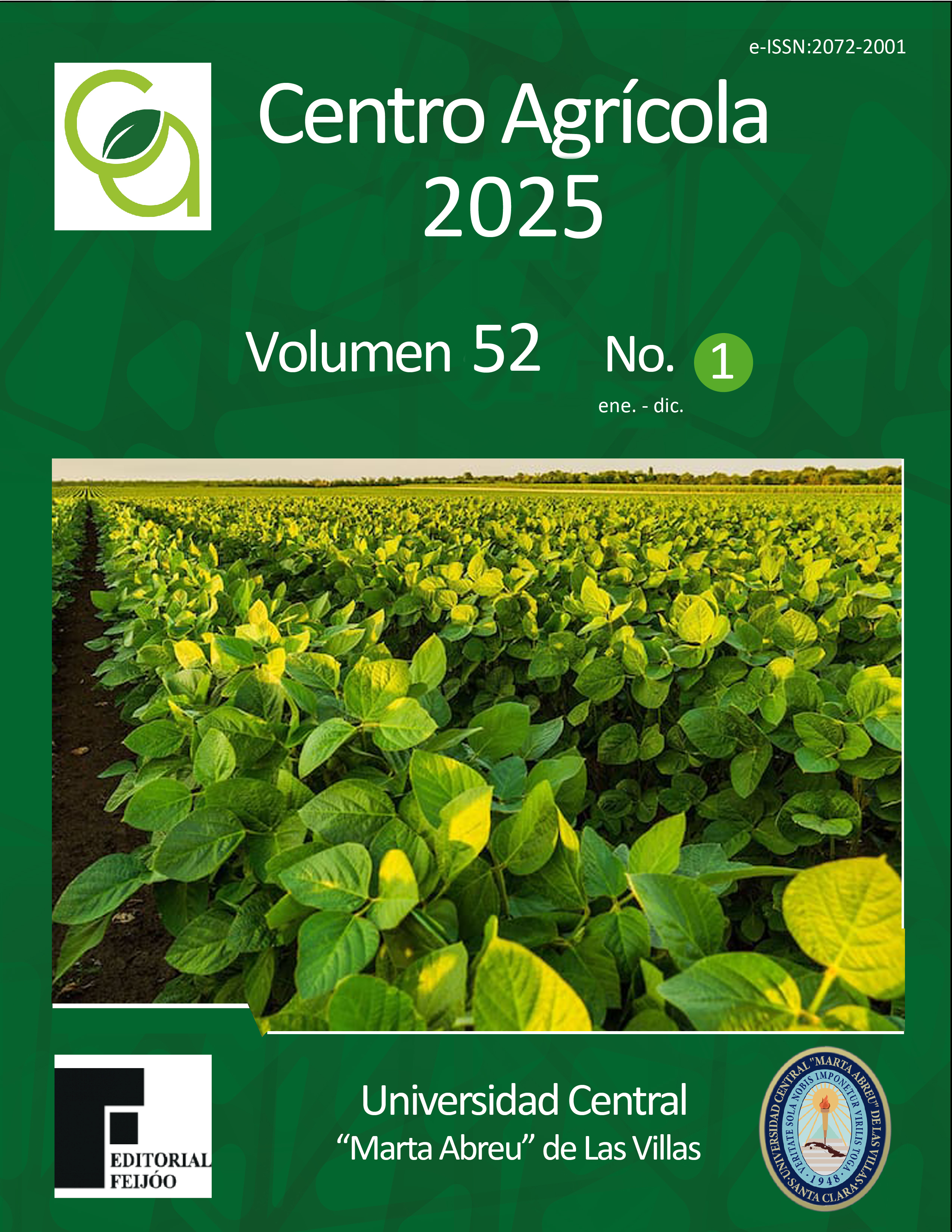CF: cag241232412
ARTÍCULO DE INVESTIGACIÓN
Momento óptimo de polinización artificial para la producción de semilla híbrida de tomate (Solanum lycopersicum L.), cultivar ‘Alty’ F1
Optimal moment of artificial pollination for tomato hybrid seeds production (Solanum lycopersicum L.), cultivar ‘Alty’ F1
Reniel Hernández Oliver1*
Julio César Hernández Salgado1
Ileana Miranda Cabrera2
1 Instituto de Investigaciones Hortícolas "Liliana Dimitrova" (IIHLD), carretera Bejucal-Quivicán km 33 ½, Quivicán 33500, Mayabeque, Cuba
2 Centro Nacional de Sanidad Agropecuaria (CENSA), carretera de Jamaica y Autopista Nacional km 22 ½, San José de las Lajas 32700, Mayabeque, Cuba
RESUMEN
Contexto: La producción de híbridos nacionales de tomate para los sistemas de cultivo protegido es una prioridad para garantizar la seguridad y la soberanía alimentaria. Para la creación de híbridos F1, se necesita ajustar la tecnología, incluyendo el momento óptimo de polinización artificial después de la emasculación de las flores.
Objetivos: Evaluar el momento óptimo de polinización artificial para la producción de semilla híbrida sobre los caracteres de calidad del fruto y la semilla en el cultivar de tomate ‘Alty’ F1.
Métodos: El diseño empleado fue de bloques al azar con cuatro repeticiones y tres tratamientos de polinización con tiempo después de la emasculación: T1 control) - inmediatamente, T2 - 24 h y T3 - 48 h. Las evaluaciones realizadas fueron: porcentaje de frutos cuajados, masa promedio de frutos, número de semillas por fruto, peso promedio de semilla por fruto, peso de 1000 semillas y porcentaje de germinación. El análisis estadístico se realizó mediante el programa InfoStat 202.
Resultados: Cuando la polinización artificial se realiza 24 h y 48 h después de la emasculación, aumentan el número de frutos cuajados, la masa promedio de los mismos y la calidad de la semilla, logrando aumentar el número y peso de semillas por fruto, el peso de 1000 semillas y el porcentaje de germinación.
Conclusiones: El momento óptimo de polinización artificial más adecuado para la producción de semilla híbrida de tomate cultivar ‘Alty’ F1 ocurre cuando se realiza la polinización entre 24 h y 48 h después de la emasculación.
ABSTRACT
Context: The production of national tomato hybrids for protected cultivation systems is a priority to ensure food security and sovereignty. For the creation of F1 hybrids, it is necessary to adjust the technology, including the optimal timing for artificial pollination after flower emasculation.
Objectives: To evaluate the optimal moment of artificial pollination for hybrid seed production based on fruit and seed quality traits in the F1 tomato, cultivar ‘Alty’.
Methods: A randomized block design was used with four replications and three pollination treatment timings after emasculation: T1 (control) - immediately, T2 - 24 h, and T3 - 48 h. The assessments included: percentage of fruit set, average fruit mass, number of seeds per fruit, average seed weight per fruit, weight of 1000 seeds, and germination percentage. Statistical analysis was performed using the InfoStat 202 program.
Results: When artificial pollination is conducted 24 h and 48 h after emasculation, there is an increase in the number of fruit set, average mass of the fruits, and seed quality, resulting in higher number and weight of seeds per fruit, weight of 1000 seeds, and germination percentage.
Conclusions: The most suitable optimal moment for artificial pollination in the production of hybrid tomato seeds of the ‘Alty’ F1 cultivar occurs when pollination is performed between 24 h and 48 h after emasculation.


